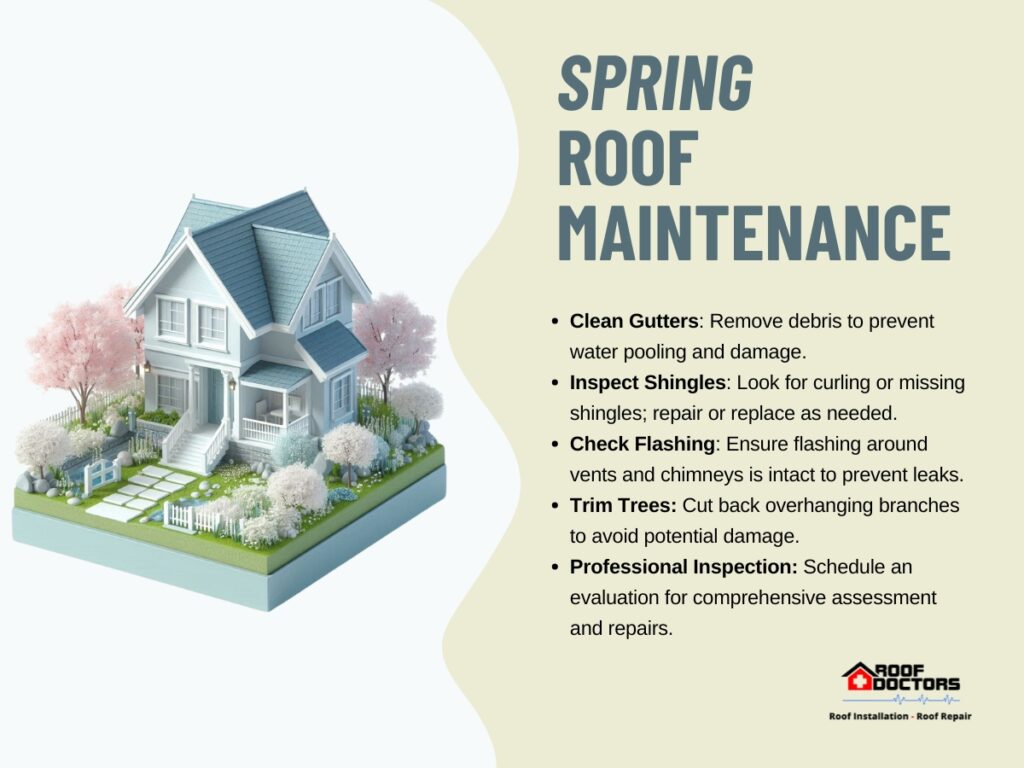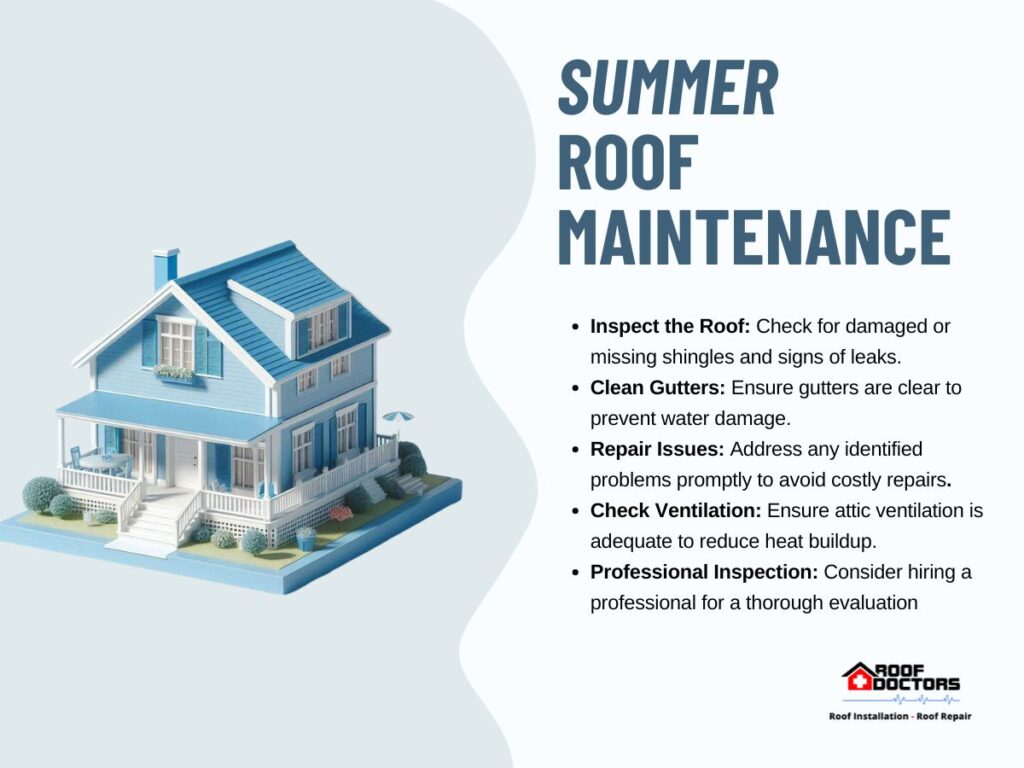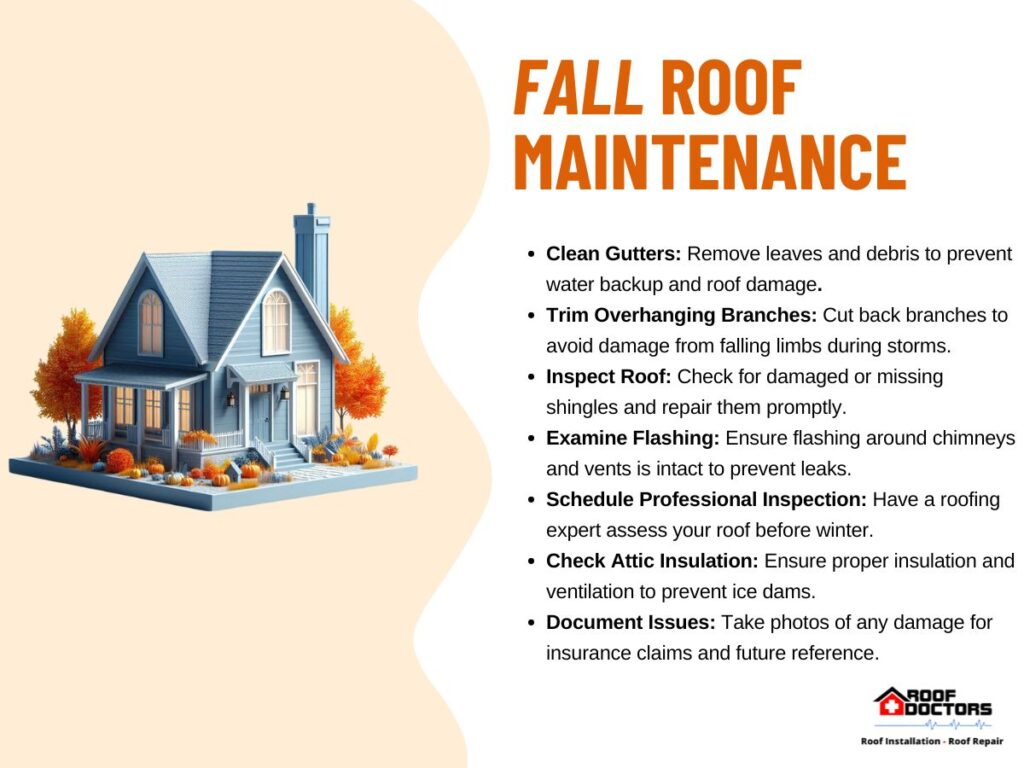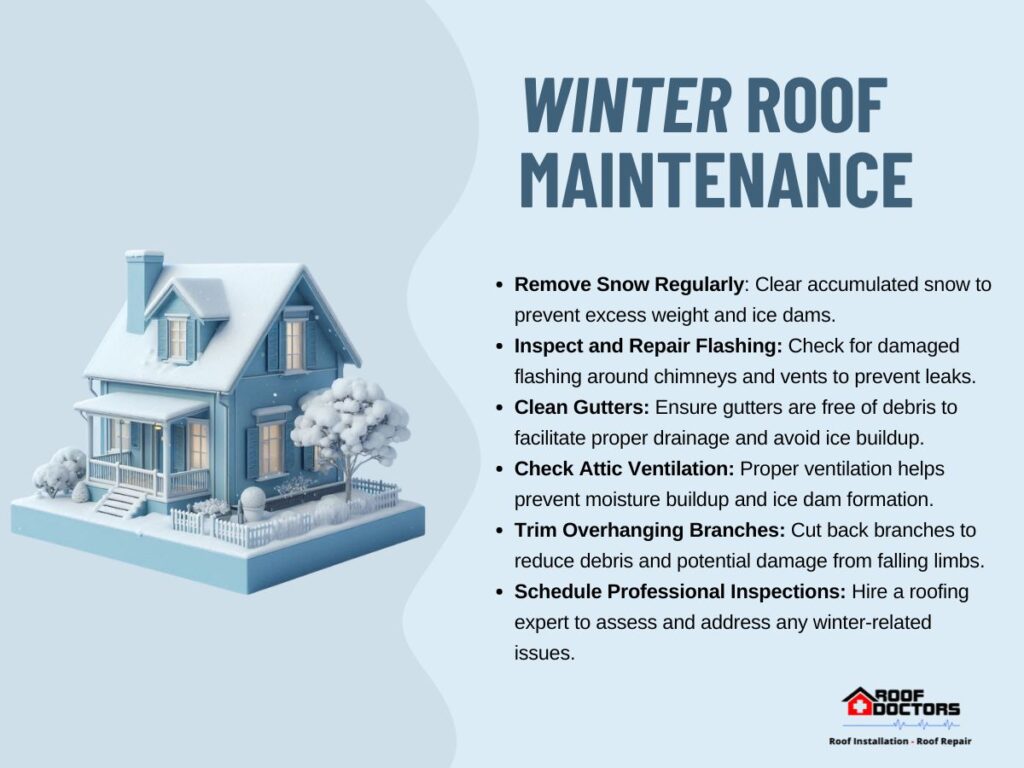Your seasonal roof maintenance is one of the most important parts of your home, standing strong against everything nature throws at it. Whether it’s the scorching sun of summer or the heavy snow of winter, your roof is constantly working to protect you and your family.
But like any hard-working component of your home, it needs regular care and attention to keep performing at its best. Seasonal roof maintenance isn’t just about making your roof look good; it’s about ensuring it can handle the unique challenges each season brings.
Each season brings its own set of conditions that can affect your roof in different ways. Taking a proactive approach to roof maintenance gives you peace of mind, knowing that your home is well-protected year-round.
Spring
Spring is a time of renewal, not just for nature but for your home as well. As winter fades, your roof may have taken a beating from the harsh conditions, and now is the perfect time to assess its health.
After months of snow, ice, and freezing temperatures, your roof might be showing signs of wear that aren’t immediately obvious. Spring’s mild weather provides the perfect opportunity to check your roof without the challenges that come with extreme cold or heat.

1. Inspect for Winter Damage
Winter can leave its mark on your roof in various ways, from ice dams to loose shingles. A thorough inspection allows you to identify any areas that need attention.
Look closely for signs of damage such as cracks, missing shingles, or leaks. Pay special attention to areas where ice might have accumulated, as these spots are particularly vulnerable to damage.
2. Clear Debris
Spring often brings with it an accumulation of debris that’s been hidden under the snow. Leaves, twigs, and other debris can clog your gutters and weigh down your roof.
Clearing this debris not only prevents water buildup but also helps you get a clear view of your roof’s condition, making it easier to spot any damage.
3. Check for Mold and Algae
The dampness of winter can create a breeding ground for mold and algae, which can damage your roof if left untreated. Inspect your roof for any dark streaks or green patches that indicate the presence of mold or algae.
Addressing these issues early prevents them from spreading and causing more significant problems.
4. Repair Shingles and Flashing
Winter storms can loosen shingles and flashing, making your roof more vulnerable to leaks. Take the time to inspect and repair any loose or damaged shingles and flashing.
Ensuring these elements are secure will help protect your roof from spring rains and future storms.
5. Clean Gutters and Downspouts
Your gutters and downspouts play a critical role in directing water away from your roof and home. After winter, they’re likely filled with debris that can cause blockages.
Cleaning them out ensures that water flows freely, preventing damage to your roof, walls, and foundation.
Summer
As the summer sun shines brightly, your roof faces a new set of challenges. While the warm weather is generally more forgiving than winter’s harsh conditions, the intense heat and UV rays can still take a toll on your roof.
Summer is the ideal time to focus on preventative care, ensuring that your roof remains in top shape despite the season’s high temperatures. Summer’s extended daylight hours and generally calm conditions make it easier to perform maintenance tasks that might be more difficult during other seasons.

1. Inspect Roof for Heat Damage
The relentless summer sun can cause your roof’s materials to expand and contract, leading to potential damage. Over time, this can result in cracked or warped shingles, which compromise the integrity of your roof.
Take the time to inspect your roof for any signs of heat damage, such as curling shingles or discoloration.
2. Check Ventilation
Proper ventilation is crucial in maintaining a healthy roof, especially during the hot summer months. Without adequate airflow, heat can build up in your attic, causing your roof to overheat and leading to higher energy costs.
Ensure that your attic is well-ventilated to allow for proper air circulation. This not only helps your roof but also keeps your home cooler and more energy-efficient.
3. Seal and Paint
A fresh coat of sealant or reflective paint can do wonders for your roof’s ability to withstand the summer heat. Reflective coatings help to deflect the sun’s rays, reducing the temperature of your roof and, by extension, your home.
This simple step can prolong the life of your roof and make your home more comfortable during the hottest months of the year.
4. Trim Overhanging Branches
Overhanging branches can pose a risk to your roof during summer storms. They can scratch the surface of your roof, damage shingles, or even fall and cause significant damage.
Trimming back these branches not only protects your roof but also reduces the likelihood of debris accumulating on your roof, which can lead to clogged gutters and water damage.
5. Inspect Skylights and Chimneys
Skylights and chimneys are often overlooked during routine roof inspections, but they are potential weak points where leaks can develop. Summer is an excellent time to check the seals around these features to ensure they are intact and functioning properly.
Resealing any gaps now can prevent water from entering your home during summer rains or the upcoming fall season.
Fall
As the crisp air of fall sets in, it’s a reminder that winter is just around the corner. This is the time to ensure your roof is ready to withstand the challenges of colder weather.
Fall offers a window of opportunity to tackle essential maintenance tasks under comfortable conditions. The milder weather makes it easier to inspect, repair, and reinforce your roof before winter’s harsh conditions set in.

1. Inspect and Clean Gutters
As trees shed their leaves, your gutters can quickly become clogged, leading to water backups and ice dams when the temperature drops. Cleaning your gutters thoroughly in the fall ensures that water flows freely away from your roof and home.
It’s also a good time to inspect for any damage or sagging that may have occurred over the year.
2. Check Flashing and Seals
Your roof’s flashing and seals are its first line of defense against water intrusion. Over time, these areas can deteriorate, especially after a summer of heat expansion.
Fall is the perfect time to check and reinforce the flashing around chimneys, vents, and skylights. Ensuring these seals are intact will help keep water out during winter storms and melting snow.
3. Examine Roof Valleys
Roof valleys are where two roof slopes meet, creating a natural channel for water to flow. This being, they are particularly vulnerable to water damage and need to be clear of debris.
Inspect these areas closely to ensure they are free from leaves, twigs, and other materials that could cause blockages.
4. Inspect and Repair Insulation
Adequate insulation in your attic is key to preventing heat loss and the formation of ice dams. As you prepare for winter, take the time to inspect your attic insulation. If it’s thin or worn out, consider adding more.
Proper insulation not only protects your roof but also helps to keep your home warm and energy-efficient during the colder months.
5. Check for Pests
As temperatures drop, animals may seek shelter in your attic or roof eaves. These pests can cause significant damage if they nest in your roof.
During your fall maintenance, look for signs of pests such as droppings, chewed wires, or holes in the roofing material. Addressing these issues early will prevent further damage and keep your home secure through the winter.
Winter
While your roof is built to withstand harsh conditions, it’s important to stay vigilant during this season to prevent damage before it escalates. The cold, ice, and snow can make roof maintenance difficult, but addressing potential problems early can make a world of difference.

1. Inspect After Heavy Snowfalls
Heavy snowfall can add significant weight to your roof, increasing the risk of structural damage. After a major snowstorm, it’s crucial to inspect your roof for any signs of stress, such as sagging areas or cracks.
If you notice any issues, consider safely removing some of the snow to reduce the load.
2. Check for Condensation
Condensation inside your attic can lead to mold growth and wood rot, both of which can weaken your roof. During winter, the contrast between warm indoor air and the cold roof surface can create the perfect environment for condensation to form.
3. Repair Small Issues Immediately
Winter isn’t the ideal time for major roof repairs, but addressing small problems quickly can prevent them from becoming bigger issues. If you spot a minor leak or a loose shingle, take care of it right away.
Even a small repair can make a big difference in keeping your roof watertight and preventing further damage.
4. Monitor Ice Dams
Ice dams form when snow on your roof melts, flows to the eaves, and refreezes, creating a barrier that prevents proper drainage. This can lead to water backing up under your shingles and into your home.
Proper insulation and ventilation can also help prevent ice dams from forming in the first place.
5. Schedule a Professional Inspection
Winter roof maintenance can be challenging, especially when dealing with snow and ice. If you’re unsure about the condition of your roof or if you’ve noticed potential issues, it’s a good idea to schedule a professional inspection.
A roofing expert can safely assess your roof’s condition and recommend any necessary repairs, giving you peace of mind throughout the winter.
The Effects of Northern California’s Climate on Roof Lifespan
Taking care of your roof throughout the year is one of the most important things you can do to protect your home. Each season brings its own challenges, from the harsh cold of winter to the intense heat of summer, and addressing these challenges head-on ensures that your roof stays strong and reliable.
When considering how the climate affects your roof, it’s also important to think about specific regional conditions, such as those in Northern California. The unique weather patterns in that area—ranging from hot, dry summers to wet, stormy winters—can have a significant impact on roof lifespan.
Just as Northern California’s climate requires tailored roof care strategies, so does your local climate, wherever you may be. Understanding how your specific environment influences roof wear and tear can help you make informed decisions about maintenance and repairs, ensuring your roof stands the test of time.


